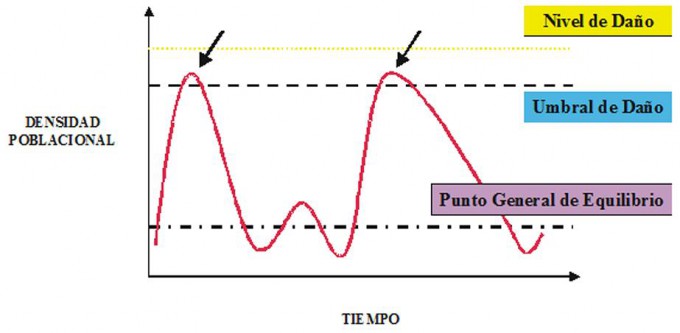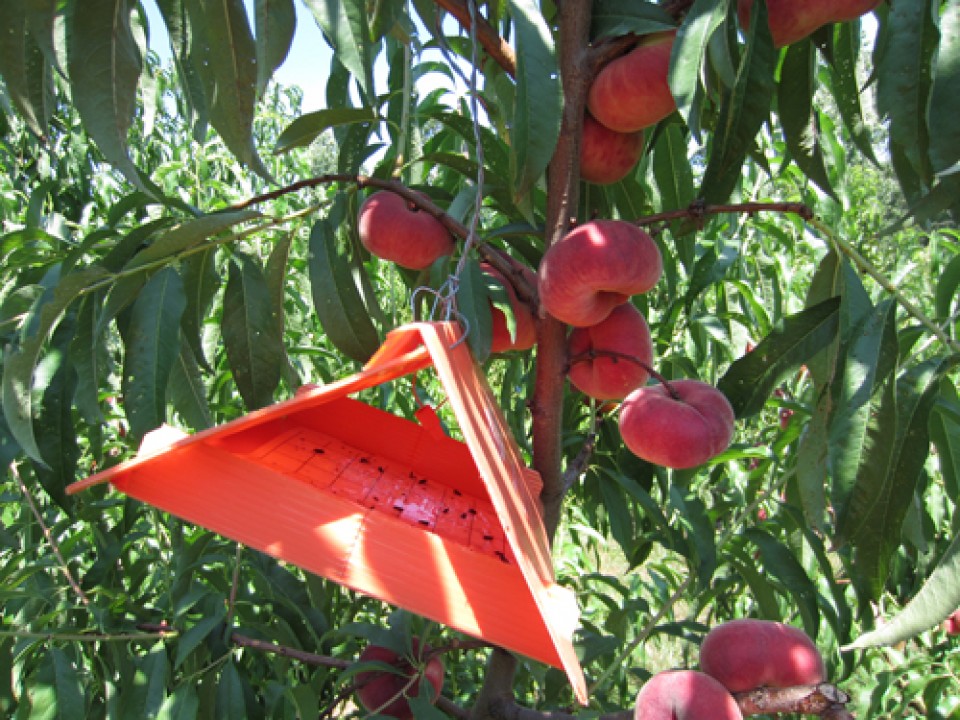ALTERNATIVES
TO PESTICIDES -2- THE CROP MONITORING
We
can't really classify the crop monitoring as an alternative to pesticides, but
I decided to make it the starting point of this series because it's the
foundation of Integrated Pest Management, and of phytosanitary protection in
organic farming.
None
of the methods, techniques, and novelties that will come into it, will develop
or function properly without this fundamental step.
Any
crop monitoring implies the integration of a rarely commented and yet essential
aspect for a modern, productive, respectful, healthy and sustainable
agriculture: the knowledge.
Sustainable
agriculture is an agriculture of science and knowledge.
The
knowledge of the crop first, its physiological cycle, its climatic adaptation,
its agronomic requirements, its nutritional needs, its sanitary and physiological
sensitivities, its compatibility with surrounding crops, etc.
The
knowledge of the soil, which is the vital support of the crop, in order to take
into account the potential susceptibility factors (pathogens, risks of
nematodes, radicular asphyxia, etc.), and to know the nutritional contributions
of the soil to the crop (including the risk of deficiencies).
The
knowledge of adverse risks, especially climate risks, diseases, pests.
The
knowledge of crop protection auxiliaries (insects, fungi and predatory
vertebrates), which will be useful in helping to solve specific problems of the
crop.
The
knowledge of the environment of the growing areas, to know what help it can
bring us (favorable areas for the development of some auxiliaries for example),
or what constraints it assumes (the proximity of illuminated areas may increase
the presence of some nocturnal Lepidoptera, harmful to crops for example), and
what the farmer will have to do, or not to do in order to take into account
this environment while getting the best possible result of his activity.
It should be
noted that this level of training and knowledge, now recognized as the
essential starting point for any evolution of agricultural production towards
virtuous practices, is a recent (and not yet fully generalized) achievement in
the most developped countries (from the second half of the 20th century), and
still to be acquired in much of the world. Agriculture universally remains as
one of the most backward sectors of human activity and the world economy, in
education, training and development.
Picture:
Issiaka Konate (ARAF - Dogon Plateau), Mali
Once this
knowledge has been acquired and the crop put in place, the farmer will have to
implement a process, often complex, which will allow him to put his crop in the
most favorable conditions for its development and production, both in terms of
quality in quantity.
One
of the key points will be the protection of the crop against diseases and
pests.
-
He
has first to implement all available means to prevent health attacks from
occurring. It's prophylaxis. This
will be the removal of contaminated remains from previous or adjacent crops,
pruning, cleaning of surrounding areas, etc.
-
He
will then implement observation systems, so as to detect attacks as early as
possible. It's monitoring. It's the
setting up of monitoring traps, observation protocols, counting, climatological
recordings, etc.
-
He
will link observations and counts with reference levels called "nuisance
thresholds", which vary according to the crop, the region, the type of
parasite and the time. He will determine in this way from what moment a present
threat becomes really dangerous and presents an economic risk. This is the notion of intervention
threshold.
-
At
the same time that he observes the populations of pests, he observes the
presence of predators of all types. They are insects, mites, fungi or
vertebrates (birds, snakes, carnivores) that feed on different risks present on
crops. Their presence can greatly reduce or even completely eliminate the
threat of a pest population. It's the
use of auxiliary organisms.
-
He
will choose the intervention method on a case by case basis. He will use
pesticides, natural or synthetic, choosing them for their effectiveness, their
side effects and the risks to the environment and health, when no other means
will solve the problem. This is the
intervention decision.
Each crop,
each period of the physiological cycle, each type of climatic conditions will
require a suitable response.
Monitoring
of population levels of diseases and pests and their auxiliaries allows
deciding the best intervention technique, if it is needed, and its optimal
timing.
THE CHOICE
OF PRODUCTS
When I
started in agriculture in the early 1980s, the available phytopharmacopoeia
included a large number of highly versatile synthetic molecules. When you
sprayed against an attack of aphids, all that was present (Diptera,
Hymenoptera, Coleoptera, Lepidoptera and other harmful or useful insects) was
also eliminated. The respect for equilibrium was not on the agenda, and anyway
it would have been difficult to try, because none of available and allowed
pesticides, or almost, was selective.
Gradually,
more and more specific products appeared, reducing the versatility, therefore
the risks of "cleaning" untimely.
It
must be pointed out, however, that at the same time certain problems have
appeared, or reappeared, often known as described in the old treaties, but
hitherto generally controlled by the versatility of phytosanitary products.
The
information to the farmer has also increased a lot.
Until the
1990s, he knew only the risk for the user (and often only partially), and the
time to use before harvest.
Gradually,
the farmer has received ever more comprehensive information about health, the
environment, and the conditions of use.
With
improved measurement techniques and lower costs, pesticide residue controls
have become more widespread. Standards for each product and type of food have
been established.
The most
versatile products have been banned for the most part.
While
it is true that until the end of the 1980s it was usual (but not systematic)
for farmers to spray by schedule, without really worrying about the presence of
diseases or pests, let alone auxiliaries, it's no longer the case today, for
several reasons:
-
The
level of training and knowledge of farmers has risen sharply.
-
The
improvement of technical support to farmers by public, private or
cooperative-type structures also makes it possible for less-educated farmers to
progress.
-
Social
pressure around sustainable agriculture with minimal impact on health and
environment has literally exploded in recent years.
-
Concern
about the impact of farming practices by the farmers themselves has risen
sharply.
-
The
legislation is tightening each year a little more, both on pesticide
authorizations and conditions of employment, and controls and sanctions also,
at least in rich countries.
-
Supermarkets,
which control the majority of consumer markets in industrialized countries,
oblige their suppliers to follow and comply with specifications that are
currently very focused to health and environmental risks. Controls are numerous
and penalties are severe.
-
The
cost of phytosanitary protection is high, and significant savings are possible
(in comparison with a systematic schedule spraying program) thanks to a good
management.
-
Many
biological or very specific pesticides are appearing on the market, with
specific technical requirements that request very precise conditions of use,
but which allow the farmer good technical results without the risk of residues.
It's also
important to note that the pest thresholds used in the 1980s and 1990s had to
be revised in most cases because of the evolution of available solutions.
Indeed, when
the farmer had very versatile products with a significant shock effect, he
could wait for harmful attacks to reach relatively high levels.
Today it's
very different, because solutions rarely have a powerful shock effect, forcing
the farmer to anticipate.
The
philosophy of protection is no longer to "let grow up and clean everything
up", but rather to "prevent the problems from gaining momentum",
which would make them very difficult to solve.
This
paradigm shift also has a very direct impact on how the farmer focuses on
protecting his crops, because he knows that if he is not able to avoid the
development of some problems, the economic consequences can be extremely
serious.
In short,
the monitoring of the crop has long been an important technical point for the
farmer.
With the
many changes of recent years, it has become a real working method that occupies
an essential place in the protection of the crop, and in obtaining a
satisfactory technical result.
Yes,
if it is true that crop monitoring is not, in itself, an alternative to the use
of pesticides, it's however a key factor in the success of the crop with a
minimum of pesticide interventions.






Great post thanks for share article.
RépondreSupprimerbacillus thuringiensis
RépondreSupprimerDo you need a loan ? Looking for a loan for a long time get your Guarantee loan today for 2% Interest rate
Private Loan ?
Mortgage ?
Loan to Buy a property ?
Car Loan ?
Business Loan ?
Student Loan ?
Real Estate Loan ?
Loan to Pay off your debt or bills ?
Contact us by email: (inforamzanloan@gmail.com) for further procedures.